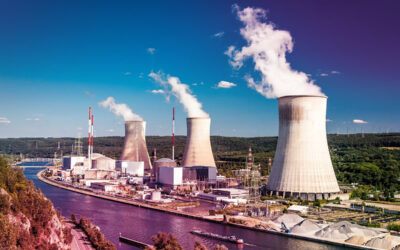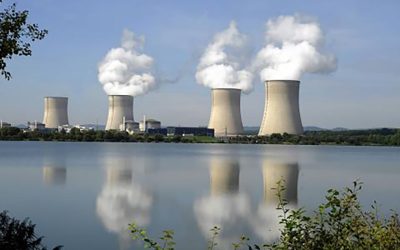Fabio Indeo[1]
Trans Adriatic Pipeline and Italy: an erratic approach toward a strategic energy project
On October 26, Italian Prime Minister Conte gave final approval on the realization of the Italian segment of the Trans-Adriatic Pipeline (TAP), removing all hindrances to the completion of this strategic project.[2]
As a matter of fact, TAP is a key component of the broad Southern Gas Corridor project, strongly backed by the European Union Commission as the flagship initiative in order to enhance its energy security condition through a strategy of geographic diversification of energy imports which could reduce the dependence on Russian natural gas.
However TAP project faced strong defiance from the local authorities of Italy’s Apulia region on the basis of environmental concerns, openly supported by the 5-Star Movement which promised to halt its realization if they come to power.
The aim of this paper is to describe the strategic relevance of this project not only for the EU- in order to boost EU energy security – and for Azerbaijan – which will legitimize itself as a reliable energy supplier for European countries – but for all transit countries involved in the project. About them, Italy has showed a sclerotic approach about TAP project which can contribute to transform Italy in gas hub, even if several hindrances have to be solved.
TAP, a flagship project to preserve EU energy security
The realization of the Southern Gas Corridor (SGC) has been identified as one of the key element to enhance EU energy security through the diversification of natural gas imports. SGC aims to deliver natural gas from the Caspian Sea basin to the EU via a 3,500 km-long network of pipelines crossing Azerbaijan, Georgia, Turkey, Greece, Albania, and come onshore in Italy.[3]
The Trans-Adriatic Pipeline (TAP) is the westernmost segment of this intraregional energy project, which is composed by two other pipelines: the Transanatolian gas pipeline or TANAP (crossing Turkish territory from east to west)[4] and the existing South Caucasus Pipeline (SCP) from Azerbaijan to Turkey – also known as the Baku-Tbilisi-Erzurum gas pipeline, which has been expanded from 7 billion cubic metres of gas (bcm) to 23 bcm of natural gas per year – which is the connecting link between Azerbaijan and the TANAP.
According to TAP consortium – composed by British Petroleum (20 percent shares), SOCAR (20 percent), Snam S.p.A. (20 percent), Fluxys (19 percent), Enagas (16 percent) and Axpo (5 percent – SGC should be on stream by 2020: in the first phase, its initial capacity will be 16 bcm per year of which 10 bcm will be delivered to EU markets (8 bcm to Italy and the remaining 2 bcm to Greece and Bulgaria) and 6 bcm to the Turkish market. The initial capacity of TAP will be 10 billion cubic meters of gas per year with the possibility of doubling it.[5]
SGC’s capacity would be expanded to 31 bcm after 2026, following the potential achievement of several conditions: as a matter of fact, it will be necessary that Azerbaijan will increase its production to allocate growing volumes of gas for exports, to find additional natural gas suppliers to boost SGC’s capacity such as Turkmenistan – after the expected realization of the Trans Caspian Pipeline along the two shores of the Caspian Basin – and Iran.[6]
Within the SGC project Italy plays a strategic role as southern hub to distribute natural gas from the Caspian to the EU market, thanks to its geographic position: however, even if since 2014 Italy signed international agreements to realize this pipeline, political ambivalence and hesitations towards the project could potentially delay its implementation so pushing the international consortium to look for alternative routes of transport in order to reach the EU markets.
The EU considers TAP project (worth 4.5 billion euros) a strategic project representing the westernmost segment of the wider SGC which will allow EU to geographically diversify import routes and to reduce the reliance on Russian gas imports. For these reasons, both TAP and TANAP projects have been recognized as projects of common interest (PCI) under the EU’s Trans-European energy infrastructure guidelines.[7]
Furthermore, for its realization TAP has also received the economic support of international financial institutions: in February 2018 The European Investment Bank (EIB) has approved 1.5 billion euros in financing for the TAP, as an integral part of the SGC to ship Caspian gas to central and southeastern Europe,[8] while in October 2017 the EBRD (European Bank of Reconstruction and Development) approved a US$ 500 million loan to the consortium (led by the Azerbaijani company SOCAR) which is developing TANAP.
The yearly volume of natural gas transported to Turkey (6 bcm) and Europe (10 bcm) via the SGC appears not particularly significant to radically change the energy balance in the EU based on Russian gas. However, the opening of this new alternative import route is important for the benefits granted to the involved countries (both transit and consumer countries as well as for Azerbaijan).
The convergence of interests between Azerbaijan and EU focused on the energy diversification concept has set up the Caucasian republic in the role of a key partner for the EU, in order to achieve its energy security through the implementation of the Southern Gas Corridor. In addition to its strategic geographic position as a feasible transit route for the SGC, Azerbaijan also appears to be the only supplier country which could concretely fill this energy corridor with its gas reserves: according to the estimates, Shah Deniz gas field alone – which until now is the only identified source to supply SGC – holds reserves of 1 tcm [9]
TAP could also spread benefits to the transit countries, contributing to enhance their energy security and to diversify their sources of imports.
Greece is totally dependent on natural gas imports and nearly 60 percent of these are covered by Russia: in addition to satisfy a share of the domestic demand, TAP will also legitimize Greece’s ambition to become an energy hub, considering that this country will be crossed by other planned pipeline projects such as Turkstream (even if it delivers Russian gas) and the East-Med gas pipeline, which will ship natural gas coming from the Eastern Mediterranean offshore reserves (Israel and Cyprus).
A similar scenario characterizes Turkey’s role in TAP, as transit country and EU gas hub, which will allow Ankara to benefit of non-Russian gas imports so re-balancing Gazprom’s influent position (which at present accounts for more than 50 percent of Turkish imports): however, as in the case of Greece, Turkstream will provide Russian gas to Turkey.
Albania has enthusiastically supported TAP realization, which will allow this country to increase its political influence contributing to ensure EU energy security. The geostrategic importance of Albania is linked to the fact that this country will be the hub of dispatch for the gas coming from Azerbaijan, because Albania will also host the the Ionic Adriatic Pipeline (IAP) which will be connected to the TAP pipeline to provide natural gas supply both for the Balkans and Central Europe.[10]
The possibility to re-orient gas flows from Azerbaijan along a northward route (from Albania through Montenegro, Bosnia-Herzegovina, Croatia to Central Europe) potentially represents a feasible option to allow Azerbaijan gas to reach EU markets in the case of delays or long-term opposition from Italy. In August 2016, Azerbaijan’s SOCAR signed a memorandum of understanding with Croatia, Albania, Bosnia and Herzegovina and Montenegro for the construction of IAP through these countries. This followed on the 2007 Declaration of Intent signed by Croatia, Montenegro and Albania to connect IAP and TAP in Albania’s territories. [11]
Italy and TAP: a controversial relations
Considering its strategic geographic position, Italy would receive significant geopolitical benefits and gains hosting TAP pipeline in its territory: as the National Energy Strategy 2017 has clearly highlighted, Italy can play a strategic role as EU natural gas hub, delivering additional gas supply to the European markets (through offshore pipelines and LNG terminals) coming from Caspian region, North Africa or Middle East in order to enhance the EU energy security condition through an efficient diversification strategy.[12]
Nevertheless, TAP project faced strong defiance from the local authorities of Italy’s Apulia region on the basis of environmental concerns and of the competition between central government and regional institutions about authorisations.
In 2014 the Italian Minister of Environment signed the necessary decree of environmental compatibility of the project while in 2015 Italy’s ministry of economy granted the single authorisation permit for the pipeline.
However, the governor of Apulia region Emiliano opposed to this procedure, claiming that there was not the consent of the region about TAP’s realization which is necessary considering that – according to the Italian Constitution – the regional governments have a veto power over land use and the realization of energy infrastructures.[13]
In addition to these political and administrative reasons, Emiliano supported the protests and criticism of local authorities and population regarding the environmental impact of the project. Melendugno is the municipality on the Adriatic coast where the pipeline’s offshore section is planned to come ashore: opponents and critics to the project adverse that works will have an environmental impact (affecting the popular tourist beach San Foca) and damage traditional cultivation practices (ancient olive trees).
TAP consortium adopted some initiatives to contain environmental impact such as the temporary removal of 446 olive trees and the realization of a 1.5 km micro-tunnel that was constructed to ensure that the pipeline does not affect the local Posidonia seagrass and the Mediterranean Maquis onshore.[14]
Emiliano demanded – without success – that the Apulian port city of Brindisi, where there is an available connection to the Snam’s national gas grid, could become the landfall for TAP, so also avoiding the realization of the 55-kilometer onshore pipeline from Melendugno to Brindisi.[15]
In the meantime, the 5-Star Movement supported grievances of TAP opponents promising to abandon the project if this movement win the elections. Effectively, in March 2018 the 5-Star Movement has become one of the main parties in the government coalition and discussions to halt the project have begun.
On 27 March the Council of State, Italy’s top administrative court, expressed its decision stating that TAP’s environmental impact permit, awarded in 2014, met all the conditions needed, substantially giving its approval to the construction of TAP.
But the new Minister of the Environment Sergio Costa appeared to call into question the Italian involvement in TAP project: during an interview in June 2018 he said that “Given [our] energy policy, given falling gas demand, that project [TAP] today looks pointless”[16] which could lead the Italian government to potentially review the environmental impact permit with the effect to further delay or cancel the project.
Moreover, we can observe that the statement of the Italian Minister of Environment is not completely correct: since 2014 Italy’s natural gas demand has steadily increased and its use is expected to grow in the next years because natural gas is conceived as the transition energy source to implement the decarbonization process – moving from a fossil fuel-based energy system to a more sustainable energy – also cutting CO2 emissions. Gas is an indispensable energy source for Italy: natural gas represents 36 percent of the energy needs. Natural gas is thus the second primary energy source after oil. In 2017 Italy consumed 74.7 billion cubic metres of natural gas: due to the decreasing domestic production the country is strongly dependent on gas imports – which accounts for 90 percent of its gas demand, 69 bcm in 2017 – and Russia alone covered 40 percent of Italian gas imports.[17]
In spite of the Italian delays, the other countries involved in the project have made significant progress to implement the realization of the Trans Adriatic Pipeline: on May 29 Azerbaijan’s President Aliyev officially inaugurated the first phase of the Southern Gas Corridor project (within which Azerbaijan is at present the only supplier country), while on 12 June the presidents of Turkey and Azerbaijan have inaugurated TANAP pipeline.”[18]
In July, during his official visit in Baku the Italian President Mattarella publicly reassured President Aliyev and international investors about the common interest and the Italian strong political commitment to realize the Southern Gas Corridor, because natural gas from the Caspian Sea “is exceptionally vital for Europe”.[19]
After two weeks, Italian Prime Minister Conte paid an official visit in Washington, where President Trump expressed hope that Italy will be able to build TAP, pushing to a concrete engagement of the new government to realize an infrastructure which will strengthen Italian and EU energy security, reducing Russian geopolitical influence on EU energy market. During the joint press conference in Washington, Italian Prime Minister Conte said that “TAP is strategic work in terms of energy supply to Italy and to the south of Europe and the Mediterranean area”.[20] Moreover, he declared his will to discuss and to hold meetings with representatives of the local communities concerned about the project, in order to achieve a common decision concerning the construction.[21]
Conclusion
International interest about the project and the binding contracts and agreements negotiated under the previous Italian administration have pushed Italian Prime Minister Conte to give green light to the realization of the TAP Italian segment.
TAP will help Italy to achieve the National Energy Security’s goal to become a EU gas hub, in combination with other projects – EastMed pipeline or LNG facilities along the coast – also contributing to enhance EU energy security through the diversification and the implementation of the Southern Gas Corridor.
The 8 bcm/y of natural gas expected in the first phase of TAP could meet nearly 12 percent of the Italian gas demand: however, only small volumes will be allocated to meet Italian needs while most of this gas will be distributed to Central Europe through Baumgarten Central Europe Gas Hub (located in Austria).
Consequently Italy will ensure a strategic contribution to boost EU energy security but it appears seriously exposed to a vulnerability condition in environmental and security terms hosting the south-north final segment of TAP in its territory.
Concerning criticism and opposition against the project, an including consultation among all interested local and regional actors could be a feasible option, trying to balance colliding interests: the alternative proposal backed by Emiliano to move TAP to the industrial port of Brindisi represented a potential solution which cannot delay or threat the realization of the pipeline as well as could partially downplay local opposition.
[1] Fabio Indeo, PhD in Geopolitics. He is non resident research fellow at Center for Energy Governance and Security (EGS Korea) and Central Asia analyst at NATO Defense College Foundation in Rome
[2] Elizabeth Deal, Italy Gives Final Approval of TAP, “Caspian Policy Center”, November 1, 2018, http://www.caspianpolicy.org/energy/italy-gives-final-approval-of-tap/
[3] European Union Commission, European Energy Security Strategy, COMMUNICATION FROM THE COMMISSION TO THE EUROPEAN PARLIAMENT AND THE COUNCIL, Brussels May 28, 2014, p.15, https://eur-lex.europa.eu/legal-content/EN/TXT/PDF/?uri=CELEX:52014DC0330&from=EN
[4] “Trans Anatolian Gas Pipeline Project”, official website, https://www.tanap.com/tanap-project/why-tanap/
[5] Ibidem
[6] Vladimir Socor and Matthew Czekaj, Southeastern Europe’s Energy Nexus: A Crossroads of Pipelines and Geopolitics, in M. Assenova, Z. Shiriyev (eds.), “Azerbaijan and the New Energy Geopolitics of the Southeastern Europe”, The Jamestown Foundation, Washington, 2015, pp. 30, 41
[7] EU Commission, Project of Common Interest, https://ec.europa.eu/energy/en/topics/infrastructure/projects-common-interest
[8] “The Southern Gas Corridor and the Trans Adriatic Pipeline (TAP)”, European Investment Bank, February 6, 2018, http://www.eib.org/en/infocentre/press/news/topical_briefs/2018-february-01/southern-gas-corridor-trans-adriatic-pipeline-tap.htm
[9] Fabio Indeo, Azerbaijan’s role in the Euroasiatic energy chessboard: geopolitical and strategic perspective, in G.Nodia, C.Stefes (eds.), “Security, Democracy and Development in the Southern Caucasus and the Black Sea Region”, Peter Lang Editions, 2015, p.274
[10] Emin Akhundzada, How Tap Helps Its Transit Countries, “Natural Gas Europe”, November 8, 2016, https://www.naturalgasworld.com/how-tap-helps-its-transit-countries-34218
[11] “SOCAR signs MoU on Ionian-Adriatic pipeline with four European countries”, AzerTac, August 27, 2016, https://azertag.az/en/xeber/SOCAR_signs_MoU_on_Ionian_Adriatic_pipeline_with_four_European_countries-987404; Federico Rendina, Il Tap apre altre vie. E l’hub italiano del gas rischia il naufragio, “Il Sole 24 Ore”, September 14, 2016, https://www.ilsole24ore.com/art/impresa-e-territori/2016-09-13/il-tap-apre-altre-vie-e-l-hub-italiano-gas-rischia-naufragio-174231.shtml?uuid=AD7renJB&refresh_ce=1
[12] Ministero dello Sviluppo Economico, Strategia Energetica Nazionale, SEN 2017, 10 Novembre 2017, pp. 140, 157 https://www.sviluppoeconomico.gov.it/images/stories/documenti/testo_della_StrategiaEnergeticaNazionale_2017.pdf
[13] Ilgar Gurbanov, TAP’s Fate after the Italian Referendum, “Eurasia Daily Monitor”, Volume: 13 Issue: 198, December 16, 2016, https://jamestown.org/program/taps-fate-italian-referendum/
[14] Trans Adriatic Pipeline official website, Pipeline Construction in Italy, https://www.tap-ag.com/pipeline-construction/building-the-pipeline/in-italy; Elizabeth Deal, Italy Gives Final Approval of TAP, “Caspian Policy Center”, November 1, 2018, http://www.caspianpolicy.org/energy/italy-gives-final-approval-of-tap/
[15] Domenico Palmiotti, “TAP gas pipeline project in Puglia speeding up as new solutions to limit environmental impact are found”, Il Sole 24 Ore, November 22, 2016, http://www.italy24.ilsole24ore.com/art/business-and-economy/2016-11-22/tap-gas-pipeline-project-puglia-speeding-up-as-new-solutions-to-limit-environmental-impact-are-found—183717.php?uuid=ADuT8vzB
[16] Georgi Gotev, New Italian minister calls the TAP pipeline ‘pointless’, “EURACTIV,” June 7, 2018, https://www.euractiv.com/section/energy/news/new-italian-minister-calls-the-tap-pipeline-pointless/
[17] “SNAM, Italy as strategic hub”, July 3, 2018, http://www.snam.it/en/Natural-gas/safe-energy/italy-as-a-strategic-hub/; “Consumi di gas nel 2017: in crescita di circa il 6%”, QualEnergia, January 4, 2018, https://www.qualenergia.it/articoli/20180103-consumi-di-gas-nel-2017-crescita-del-6-percento/
[18] “Leaders open TANAP pipeline carrying gas from Azerbaijan to Europe,” Hurriyet Daily News, June 12, 2018,http://www.hurriyetdailynews.com/leaders-open-tanap-pipeline-carrying-gas-from-azerbaijan-to-europe-133191
[19] “Italian President: Southern Gas Corridor is exceptionally vital for Europe”, AZERTAC, Azerbaijan State News Agency, July 18, 2018, https://azertag.az/en/xeber/Italian_President_Southern_Gas_Corridor_is_exceptionally_vital_for_Europe-1180738
[20] “Remarks by President Trump and Prime Minister Conte of Italy in Joint Press Conference”, White House, Foreign Policy, July 30, 2018, https://www.whitehouse.gov/briefings-statements/remarks-president-trump-prime-minister-conte-italy-joint-press-conference/
[21] “Italy’s government committed to TAP implementation”, Trend Az, August 3, 2018, https://www.azernews.az/oil_and_gas/135753.html






